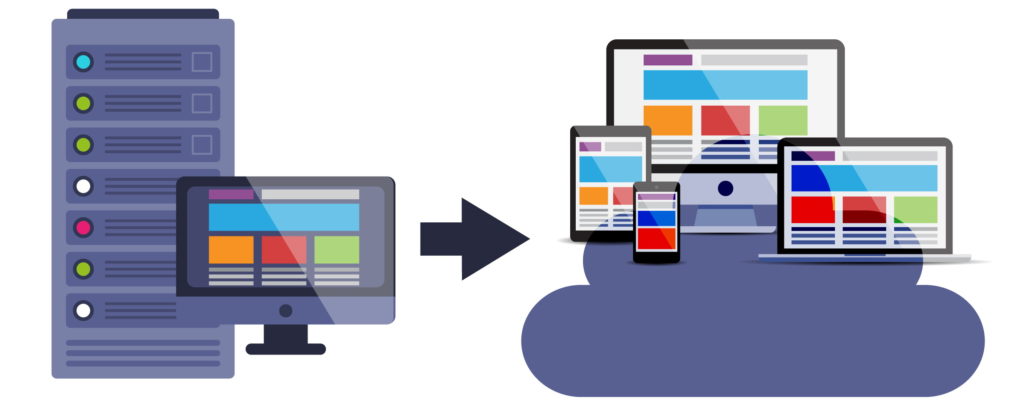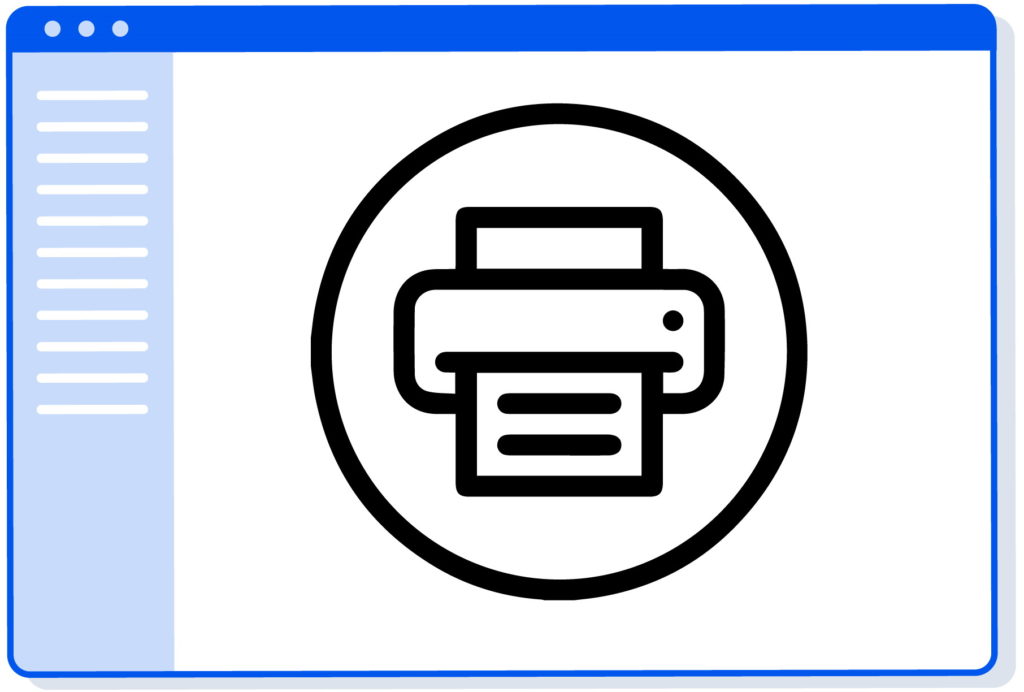Modernize Your Legacy Applications and Enable Direct Printing from Web Applications
There can often be a significant difference between management requirements and software delivery by IT, as the viewpoints vary widely. While management and department leaders are primarily concerned with user-friendliness and easy implementation of modern and agile business processes, the focus of the IT department is on reliable delivery, but also delivery that is cost-effective.
Especially with many conventional, long-used systems, also known as legacy applications, a complete conversion to a modern web architecture is theoretically feasible. But the financial and time investment required often exceeds the available scope. Also, such a transformation involves a certain amount of risk since re-implemented and old systems can rarely be used in parallel, and a smooth changeover is essential.
Such legacy systems were either created in the established client-server architecture or still run on classic mainframe computers such as IBM zSeries, which go back to System/390, or on AS/400. Knowledge of Cobol is more in demand here than C# or Swift. In the client-server area, after the launch of Windows, there was a real boom in what was then called the fourth generation of programming languages, SQLWindows from Gupta, which is now available under the Open Text umbrella. SQLWindows, equipped with a graphical IDE at that time, made it possible in the early 1990s to implement user-friendly Windows front-ends with access to a central database.
Backend Services as a Compromise

If completely rewriting applications is not feasible, how can IT departments still meet the needs of management? Modern web front-ends have become essential to meet current demands. In addition to independence from the end device used, it is much easier to integrate different business applications. But how can this be implemented if redevelopment seems too costly?
Quite simply – mainframe and client-server applications have one thing in common with the current cloud architecture: A central approach. Even if a dynamic, distributable, highly scalable architecture, based for example on Kubernetes, cannot be implemented, then the resources currently available are usually sufficient to run the application itself.
Therefore, it is possible to replace the existing front ends of the legacy applications with modern web front-ends that access the services of the legacy applications. From the user’s point of view, the difference to a complete web architecture is not apparent, and this approach offers an almost perfect balance between business and IT department requirements.
Direct Printing from Web Applications
However, if the front-end of a legacy app is replaced by a web interface, difficulties are also faced. While the legacy application can directly address local resources and devices such as a connected printer, for example, as part of a classic SQL Windows application running on Windows, this is usually not possible with the web interface.
However, printing can also be designed as a service, and thanks to local connectors that link the print service and the printers, there is no need to do without productive direct printing from web applications. With the right solution, users can easily print from the web application directly to the printer connected to the PC. Or in a branch office via an iPad to the printer in their department. Nearly any scenario can be implemented this way.

ThinPrint offers two solutions for printing directly from web applications: ThinPrint as an on-premises installation for customers who prefer the benefits of a completely self-operated and managed solution. For customers who prefer to focus less on infrastructure services, ezeep as a cloud printing service offers an ideal solution. The decision to use cloud printing can make a lot of sense, especially in the web application environment.
High-availability Printing for Legacy Applications
Modernized legacy applications are generally business-critical; otherwise, the high costs of operating and modernizing such old systems simply could not be justified. With such important applications, it is always best to design connected services that are fully able to handle workflows, such as the printing system, with the appropriate high availability levels.
If ezeep is used as a cloud printing solution, ezeep’s scalable cloud architecture ensures the corresponding high availability levels. The IT department no longer needs to worry about downtime or take special measures to prevent it.
For customers who opt for an on-premises solution, ThinPrint closes a crucial gap in Microsoft’s operating systems. Since Windows Server 2012, Windows no longer offers a high-availability Windows print cluster. ThinPrint therefore delivers itself a high-availability architecture. This ensures that nothing stands in the way of direct, high-availability printing from web applications, even in on-premises environments.
With ThinPrint or ezeep, modernized legacy applications can be implemented in such a way that printing is delivered simply, quickly, and with high availability.




